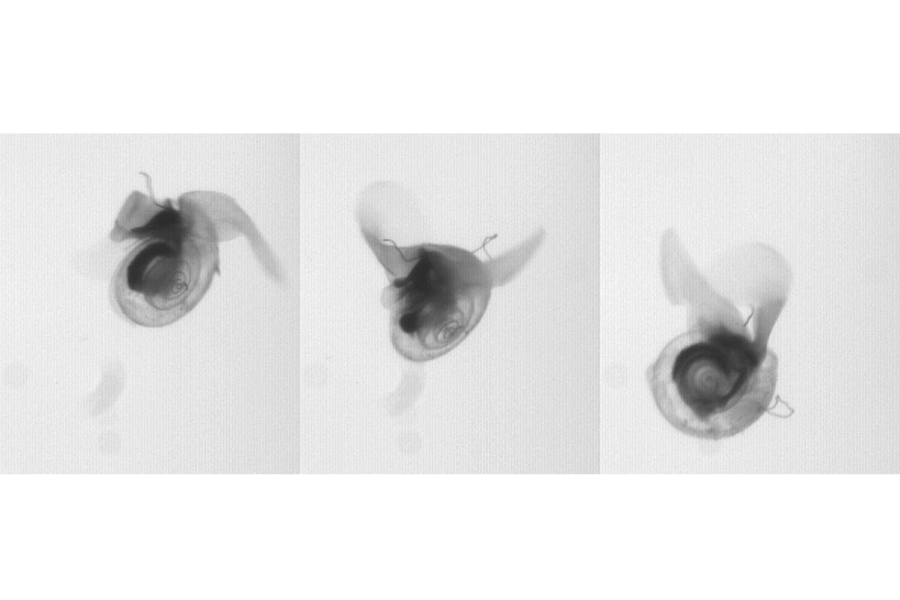Gelatinous sea snails ‘fly’ through water like a butterfly, say scientists.
Loading...
New research suggests that sea butterflies swim through Arctic waters much like flying insects traverse the air – by flapping their wings.
A new study led by David Murphy, a postdoctoral researcher at Johns Hopkins University, examined the fluid mechanics used by a small marine snail called Limacina helicina. Dr. Murphy and colleagues found that these creatures, better known as sea butterflies, appear to mimic insect flight as they swim. The study was published Wednesday in the Journal of Experimental Biology.
L. helicina is just one species in the group known collectively as sea butterflies. These mollusks live exclusively in Arctic waters, feeding on phytoplankton and small zooplankton. Unlike most snails, which use a single fleshy “foot” to crawl, these sea butterflies are propelled by wing-like protrusions known as parapodia.
Aside from a calcium carbonate shell, L. helicina have entirely gelatinous bodies. This posed a challenge for Murphy and colleagues, who needed to ship these extremely fragile creatures from polar waters to their facilities in Atlanta. What’s more, sea butterflies can be difficult to find in the first place.
“They tend to be abundant for just a short time each year,” Murphy tells the Monitor, “so the experiment has to be ready and waiting for them when, and if, they arrive. We were amazingly lucky to get these in such good shape from collaborators on the West Coast. We were also really lucky to get such good data out of them. It's really hard to get the animals to swim right in front of the camera, but these behaved beautifully and gave us perfect data.”
Researchers used four high-speed cameras to capture the unusual movement of these creatures. They had only a few hours to film – any longer, and swimming conditions would no longer be ideal.
“We looked at the wing kinematics – how it moves its wings in a figure eight pattern – and it's very similar to how a fruit fly beats its wings,” Murphy says. “Then we measured the flow around the animal as it swims, and the sea butterfly uses one of the same tricks to generate extra lift that lots of tiny insects use. In this trick, called the 'clap and fling,' the animal claps its wings behind it and then flings them apart, sucking flow in between the wings. This creates tiny flow tornadoes, or vortices, at each wing tip, which helps to lift the animal.”
These results came as a surprise to Murphy, who didn’t expect to find such insect-like morphology in a marine mollusk.
“I've studied lots of other types of zooplankton,” Murphy says, “and almost all of them use their appendages as paddles to push themselves through the water. I thought we would find that the sea butterfly uses its 'wings' to do the same thing, but the more we looked into it, the more we found that the sea butterfly is an honorary insect.”
Genetically speaking, sea butterflies and insects are not closely related. But through convergent evolution, they came to develop a remarkably similar biological mechanism from disparate origins.
“Convergent evolution occurs when different, unrelated organisms display the same features – that is, solve a particular problem in the same way,” co-author Jeannette Yen tells the Monitor. “The structures that have the same function in the different organisms would be analogous – they don’t have the same developmental origin.”
Dr. Yen and co-author Donald Webster, both researchers at Georgia Tech, will continue working with sea butterflies – they recently traveled to Antarctica to study a related species known as Limacina antarctica. They will develop computer simulations, with the aid of Johns Hopkins researcher Rajat Mittal, in an effort to further understand the mechanics behind sea butterfly swimming.








